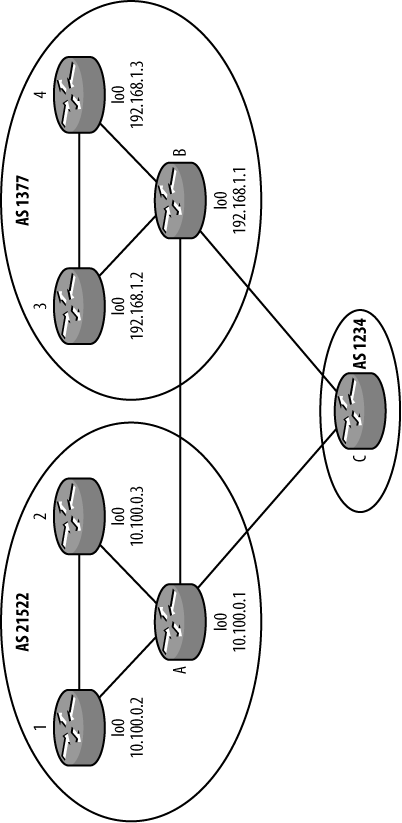Merging Our ASs Off
The complexity of merging ASs without causing network downtime requires careful preparation, with an eye on using as many automated tools as possible.
Figure 20-4 shows an example of our merger.

Figure 20-4. Pre-merger layout
Merge with Full Mesh
In the first scenario, the ASs are going to be merged and the result will be a single AS with a full-mesh architecture. To transition to the networks without suffering network downtime, you need to ensure that during the transition, the internal network has access to the external networks, and vice versa, through at least one of the EBGP peers.
IBGP
The first goal of merging our networks while maintaining high availability is to ensure that all hosts internal to the network continue to be able to reach external networks. Chapter 19 discussed merging the IGPs in your network, but with “ships in the night” routing, it is now necessary to ensure that the BGP routing environments are merged.
In the first step of the merge process, the IBGP peers within AS
1337 are fully peered with the routers of AS 21522. Using
the allow statement
enables routers A, 1, and
2 to accept the connections of
routers 3 and 4 without being explicitly configured.
However, during the configuration changes, you must change the AS
number and peering IP addresses on routers 3 and 4.
Once the peering sessions are up and converged, packets on
routers 3 and 4
Get JUNOS High Availability now with the O’Reilly learning platform.
O’Reilly members experience books, live events, courses curated by job role, and more from O’Reilly and nearly 200 top publishers.

